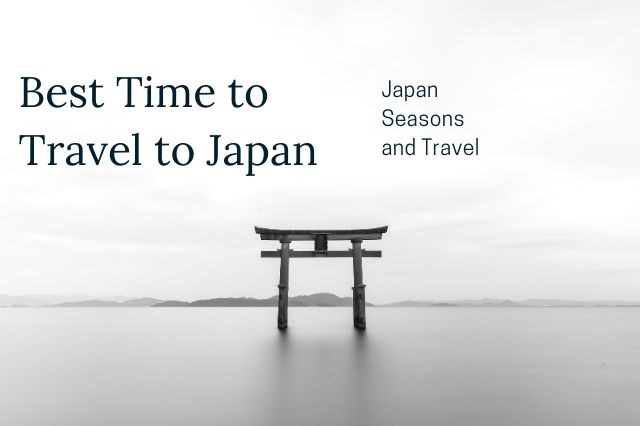When is the best time to visit Japan ?
Spring in Japan is famous for the cherry blossom season, and if you’re lucky — and don’t mind the crowds — you may experience hanami (cherry-blossom viewing) in all its glory. This romantic time of year is popular for honeymoons in Japan.
Summer is arguably the most festive time of year, with colorful matsuri (festivals) throughout the country, the chance to hike in the mountains, and lovely coastal areas where you can enjoy the sea.
Fall in Japan is another magical (and highly popular) time of year, with brilliant autumn colors and crisp, pleasant temperatures.
Winter in Japan offers amazing seafood, incredible onsen (hot springs) experiences, not to mention some of the best powder in the world for skiing and snowboarding.
Weather in Japan by Month
- January (after the New Year’s holidays) and February can be great if you don’t mind the cold, because there are very few tourists.
- Late March and early April (cherry blossom season) are beautiful, but it’s one of the most crowded and expensive times of year.
- Mid to late May is great, with pleasant weather and not so many crowds.
- June can be nice, but is often rainy (and humid).
- July and August are very hot and humid, but also lively with lots of festivals.
- Mid to late September can be nice (if hot), with fewer tourists than summer or fall.
- October and November have very pleasant autumn weather, but also crowds rivaling spring (especially for the fall foliage in November).
- Early December can be great if you don’t mind some cold, but mid to late December gets very crowded for New Year’s.
The Four Seasons
Japan predominantly occupies the temperate zone, and Japanese people take great pleasure in the transition of the four distinct seasons. The emphasis on seasonality that permeates every aspect of Japanese culture can be traced to its nature-based Shinto religion and agrarian past. Besides enjoying seasonal recreation and events during a year in Japan, also pay attention to the concept of “shun” (旬), which celebrates seasonal food such as fish, fruits, and vegetables, at the peak of its deliciousness.
Spring (March to May)
The plum blossoms (“ume” / “梅”) bloom in late February, signaling that a welcome spring is around the corner. The mild spring season brings out Japan’s beautiful cherry blossoms (“sakura” / “桜”), which are enjoyed from late March through April throughout the country. By May, temperatures are comfortable and vegetation has grown lush.
Summer (June to August)
Summer kicks off with the dreary rainy season (“tsuyu” / “梅雨”) from June to July, during which hydrangea (“ajisai” / “アジサイ”) blossoms can be seen shrouded in mist. This is followed by screaming cicadas (“semi” / “セミ”) and intense heat and humidity that peaks in August—watch out for mould. Spectacular, large-scale fireworks displays are held in the summer months throughout Japan.
Autumn (September to November)
The transition into autumn is marked by typhoons and heavy rain, beginning in August and lasting until September. Weather cools pleasantly in October, and November weather is relatively dry and mild. Gorgeous red and golden leaves (kouyou 紅葉) such as Japanese maple and ginkgo can be enjoyed through early December.
Winter (December to February)
December is the start of ski season, and Japan’s snow country regions are famous for deep and consistent powder snow conditions. In Tokyo, winter is cold, sunny, and dry, and the city experiences only a few days major of snowfall in January or February. Winter illuminations, marvelous spectacles of light displayed in cities, compensate for a lack of vegetation and short daylight hours.
Japan’s Peak Travel Seasons
As you know by know, certain times of year in Japan are more popular — and crowded — than others.
Here is a short list of the most popular and crowded times of year in Japan:
- The New Year’s period: from around the last week of December, into the first week of January
- Cherry blossom season: from around the second half of March, into the first half of April
- Golden Week: an extended holiday week that usually occurs in the first week of May
- Obon: an extended holiday period that usually occurs in the middle of August
- Any national holiday: refer to the list of Japanese national holidays here

